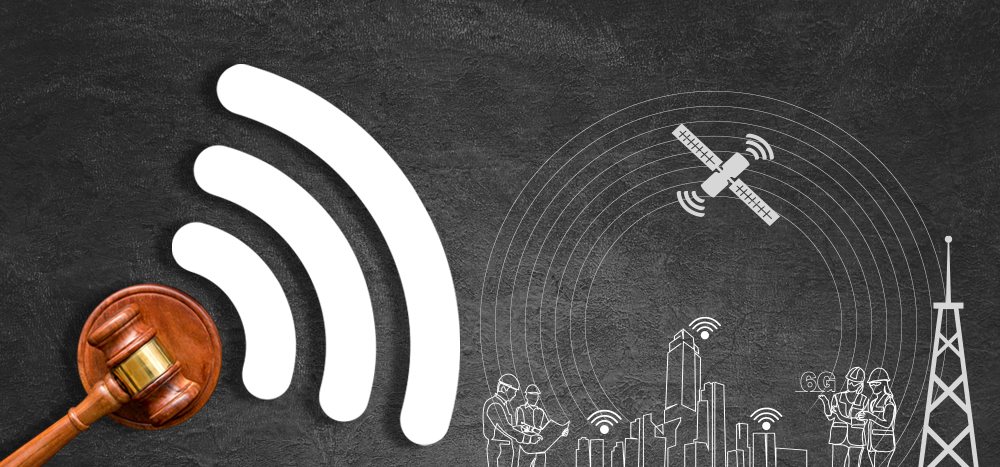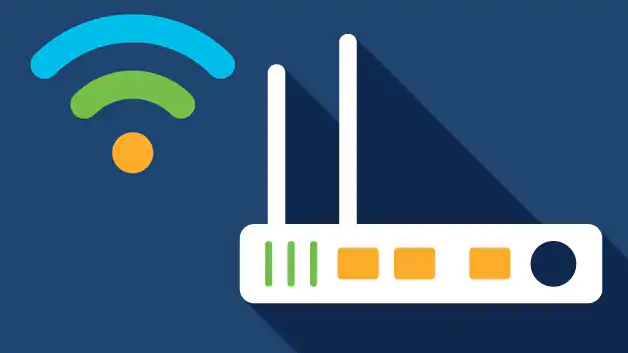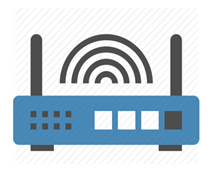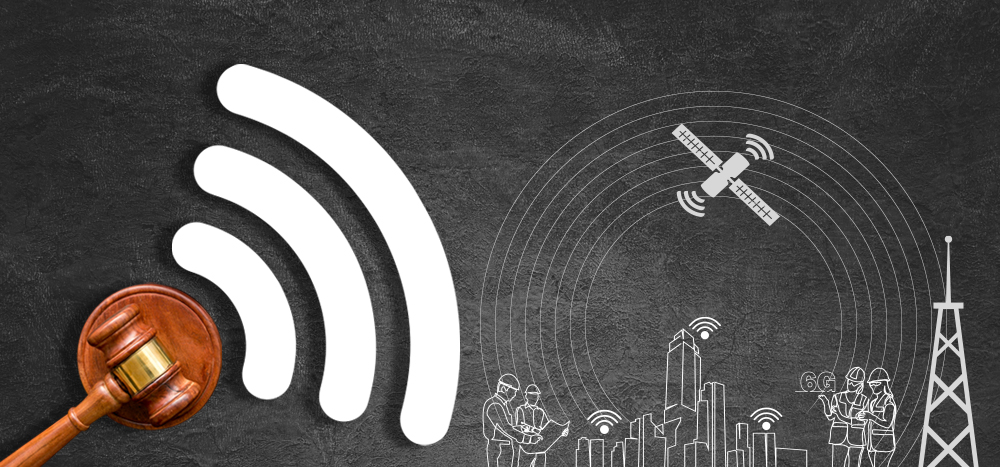We discuss the following topics in this blog:
- What Is WiFi?
- What Does WiFi Mean? (Or Doesn’t Mean?)
- Wifi Consumption in India
- How Does WiFi Work?
- What is a Wireless Router?
- What is a Wireless Access Point?
- What is WiFi 6 and What Does it Mean for the Future?
- Types of WiFi Deployments
- STL transforming WiFi deployment
In addition to these topics, we shall also be answering the following FAQs:
- What is an Optical Fibre Cable?
- What is Cloud Computing?

Contents
- 0.1 Overview
- 0.2 What Is WiFi?
- 0.3 What Does WiFi Mean? (Or Doesn’t Mean?)
- 0.4 Wifi Consumption in India
- 0.5 How Does WiFi Work?
- 0.6 What is a Wireless Router?
- 0.7 What is a Wireless Access Point?
- 0.8 What is WiFi 6 and What Does it Mean for the Future?
- 0.9 Types of WiFi Deployments
- 0.10 The STL Advantage
- 1 FAQs
Overview
Long gone are the days when an ethernet cable would have to be plugged into your computer for speeds much slower than even the average Wifi speed of today. In the technology-led society that we live in, you would be hard-pressed to find anyone who doesn’t know what the word Wifi means. Such is its pervasiveness that it has become synonymous with the internet. Even the logo that represents this technological marvel is iconic enough to be instantly recognizable.
What Is WiFi?
Put simply, Wifi is a technology that uses radio waves to create a wireless network through which devices like mobile phones, computers, printers etc., connect to the internet. A wireless router is needed to establish a Wifi hotspot that people in its vicinity may avail to get access to internet services. You’re sure to have encountered such a Wifi hotspot in houses, offices, restaurants, etc.
To get a little more technical, Wifi works by enabling a Wireless Local Area Network or WLAN, that allows for devices connected to it to exchange signals with the internet via a router. The frequencies of these signals are either 2.4 GHz or 5 GHz bandwidths. These frequencies are much higher than those transmitted to or by radios, mobile phones, and televisions since Wifi signals need to carry significantly greater amounts of data. The networking standards are variants of 802.11, of which there are several (802.11a, 802.11b, 801.11g, etc.).
What Does WiFi Mean? (Or Doesn’t Mean?)
While we’ve covered the basic definition of Wifi in the section above, there are misconceptions around the significance of the term and its origin that need addressing. A simple Google search reveals that Wifi is a short form that stands for Wireless Fidelity. Allow us to explain why this isn’t the case. Before Wifi came to be invented, Wireless Fidelity had been around for a while. The term was used to define data technology that enabled high-speed internet cableless-ly.
Wifi Alliance was the company responsible for promoting IEEE 802.11 and they needed a name to market this piece of technology. So, in 1999, they employed a brand-consulting company called Interbrand. In an attempt to change IEEE 802.11 to a more memorable name, Interbrand coined the term Wifi. This was intended as a pun on the contraction Hi-Fi which stands for High Fidelity meaning high-quality sound reproduction. The association with Wireless Fidelity only came about when the company released this as the tagline for Wifi: “The Standard for Wireless Fidelity”. Even though this was chosen to simplify the meaning of Wifi for the home audience they were targeting, Wireless Fidelity is still assumed to be the expansion of Wifi to this day.
So while Wifi and Wireless Fidelity are interrelated in more ways than one, to claim they’re the same is a falsehood.
Wifi Consumption in India
Currently, around 760 million people in our country are users of the internet and this number is projected to grow close to 1 billion by 2025. Wifi consumption is measured as a percentage of the total time spent on the internet by a country’s population. This number has taken a hit during the ongoing pandemic. In a study conducted by mobile analytics firm OpenStudy, a dip in time spent on wifi networks by Indians was observed. The numbers read 10.2% in January 2020 to 9.8% in March 2020.
The reason stated for the same is that people are preferring to use cheaper-than-wifi cellular data given how low the tariffs are. However, as things start returning to normal, wifi consumption rates should pick back up. This is because offices and public places are where Wifi networks in India are usually found. At a global level too, Wifi consumption is set to increase manifold. It is estimated that by around 2022, more than half (51%) of all internet traffic will be travelling on Wifi
How Does WiFi Work?
Given how ubiquitous Wifi has become in our modern lives, children as young as 7 need to have a basic understanding of it to be able to play online video games over it. Knowing the ins and outs of how Wifi works, however, is no child’s play.

Much like your grandfather’s old radio transistor, Wifi networks send and receive radio waves that travel through the air. Let’s say you receive a song from a friend and wish to download it on your mobile phone over Wifi. Your router will first accept that packet of data from the internet and it will convert it into radio waves. These waves will then be propagated by your wireless router into its vicinity, where they will be picked up by your mobile phone and decoded for your listening pleasure.
And that, in a nutshell, is how Wifi works.
Now, Wifi signals aren’t the only radio signals being emitted by devices to the air surrounding them. Your television, mobile network, Bluetooth speaker all operate on certain fixed bandwidths of radio signals.
Therefore, to avoid any kind of interference, Wifi has its own dedicated frequency at which its signals are transmitted: 2.4 GHz and 5 GHz. Wifi speed is greater for 5 GHz signals as compared to 2.4 GHz (the higher the better). The range of the signal, however, has an inverse relationship with the greatness of frequency. So, 2.4 GHz frequencies have a far greater signal range than 5 GHz frequencies. A normal range for Wifi is 10-35 meters, depending on interfering materials like walls, furniture, etc.
What is a Wireless Router?

A wireless router is the heart of the wireless network. Today, wireless routers can be found not only in houses but also in schools, offices, restaurants, airports, etc. It is a device that has two major purposes
- To form a local area network for multiple devices (phones, computers, printers) to connect onto and,
- To enable internet access for all eligible devices connected to the router.
Before the wireless router was around, a local area network could only be formed with the help of ethernet cables. But wireless routers have an obvious set of advantages over wired connections in the form of convenience, seamlessness, and portability of devices. This doesn’t mean, however, that wired connections have been replaced. There is still something to be said about the superior speed and reliability afforded by a wired Ethernet connection over a wireless one.
As mentioned before, Wifi operates at two bandwidths: 2.4 GHz and 5 GHz. The 5 GHz frequency is enabled by what’s called a 5G router. A 5G router is superior to its 2.4 GHz counterpart in terms of the speed it provides. 5G Wifi can be availed with the help of a 5G router which – as compared to 2.4 GHz – offers double the Wifi speed (Gigabit). Where 5 GHz signals suffer is in terms of the range of the signal, since the strength of the signal is a function of proximity to the router.
This is why routers are mostly of the dual-band type with a smart Wifi switching feature. Devices connected to the router receive the faster 5 GHz signal if they are close enough to the router and the speed drops down to the longer-range 2.4 GHz band if the device is farther away. Stay within range of the 5G Wifi, and you will find HD videos streaming without buffer, movies getting downloaded in minutes if not seconds and so on.
What is a Wireless Access Point?

A Wireless Access Point (WAP) or simply, access point, is a device of the wireless network nature that serves as a point for devices to connect to a LAN. The purpose of these wireless access points is to extend an existing network’s wireless coverage. In turn, this lets a greater number of users connect to that network.
The connection between a wireless router and a wireless access point isn’t made wirelessly but with an Ethernet cable. A wired signal is received by the wireless access point from the router via the high-speed Ethernet cable. That signal is then converted into a wireless one by the access point. Access points themselves typically only emit signals wirelessly to devices linking with devices through Wifi.
What’s interesting to point out here is the difference between a router and an access point. A router is responsible for establishing a LAN and for handling the devices connected to it. An access point, on the other hand, acts as an extender of the signal at a different location farther away from the router, allowing more devices to connect. Notably, routers can serve as access points, but not all wireless access points can play the role of routers.
What is WiFi 6 and What Does it Mean for the Future?
Traditionally, Wifi standards have rather cryptically been named as variations of 802.11 (for example, 802.11a, 802.11b etc.). Wifi 6 just happens to be the newest generation of Wifi. Unlike previous generations which have been more iterative improvements, Wifi 6 promises to be a lot more disruptive. With the promise of 4x the speed and 4x the capacity of its predecessor, Wifi 6 is set to be a game-changer in Wifi technology.
Some of its many advantages are going to be seen in such applications as:
- High-Quality Streaming
- Seamless Experience
- Improved Power Efficiency
- IoT in Dense Environments
- Enhanced Security
- Enterprises
- Transportation Hubs
In real-world terms, this translates into you not having to experience slow wifi even if 50 devices are connected to your home wifi at once. Even in sports stadiums where connections notoriously suffer from congestion, Wifi 6 offers a seamless experience owing to its increased speed and capacity capabilities.
Additionally, the wifi routers of today aren’t smart enough to be able to differentiate between the data needs of less or more intensive gadgets. A less data-hungry device like a security motion detector, for example, gets the same kind of attention that a more data-hungry 4K video stream does. Wifi 6 is intelligent enough to regulate the amount of attention to give to less vs more data-intensive gadgets and tasks. Wifi 6 makes use of two revolutionary pieces of technology to achieve this:
- Orthogonal Frequency-Division Multiple Access (OFDMA)
Splits the traffic in a channel into multiple small Resource Units (RUs). This means that users can work in parallel instead of hogging up the entire channel.
- MU-MIMO or Multiple User Multiple In/ Multiple Out Multiple antennas on a router mean that it can not only speak to multiple devices but also receive responses from all of them at the same time. This allows for two-way communication to happen parallelly with all devices
The combination of OFDMA and MU-MIMO helps Wifi 6 achieve greater throughput.
Another important concept that Wifi 6 introduces is Smart Offloading. What this comprises is the smart and seamless switching of your device’s connection between Wifi and cellular network based on the quality of experience. The idea is to make the switches in the background to provide a superior experience to the user.
This brings us to an innovative product in this space called dWifi.
dWifi is a web-scale platform that aids businesses in decongesting network traffic and manages several connections at once, no matter how congested the location. Its open, app-based architecture helps in the following critical areas:
- Improving spectral efficiency
- Offering bundled plans
- Exploring umpteen monetization opportunities and
- Delivering a high-quality user experience
Its Features Include:
dSmart Mobility
Smart offloading of 3G/4G traffic to wifi networks to save costs and leverage greater capacity and bandwidth
Guest Wi-fi
Make use of web-based authentication captive portal for subscriber self-service for services that are personalized. This makes customer engagement swifter and easier.
Location Insights
Enterprises can offer bespoke solutions by learning their customers’ requirements. They can avail total transparency in interconnect agreements and settlements
Wifi Roaming and Calling
Leverage seamless experience offered by wifi networks to conduct voice and text messaging facilities
Location-Aware
Enterprises get to provide an ideal platform for location-based advertisements for operators by identifying locations of users by using wifi to map network parameters
To take a deep dive into dWifi and learn more about how your enterprise can benefit from its superior feature-set, click here.
Types of WiFi Deployments
There are three major types of Wifi deployment depending on their suitability to the organisational context:
- Centralised Deployment
This form of wifi deployment is applicable when there is a cluster of buildings and networks are grouped close together. This has the effect of consolidating the wireless networks by virtue of the controllers being present in a central location.
2. Converged Deployment
In this form of deployment, an Access Switch converges the wired and wireless networks in one device. The outcome is an improved consistency in wired and wired connections through the access switch serving both as a switch as well as like a wireless controller. Popular with companies that have branch offices.
3.Cloud-based Deployment
As the name suggests, the cloud is made use of for devices in this form of deployment. Network devices at separate locations are managed with the help of dashboards. Anyone with access to the dashboard can view all devices, owing to the use of cloud services.
The STL Advantage
STL is transforming Wifi deployment as we know it. The Wifi Service Management Platform is one such example. The solution has a great degree of interoperability. It offers many off-the-shelf applications for smart cities and telecom operators in addition to supporting innovative business models.
Read more about STL’s innovations in Wifi deployment and the benefits being derived from them, here: Wi-Fi Service Management Platform (SMP)
FAQs
What is an Optical Fibre Cable?
An optical fibre cable is a cable type that has a few to hundreds of optical fibres bundled together within a protective plastic coating. They help carry digital data in the form of light pulses across large distances at faster speeds. For this, they need to be installed or deployed either underground or aerially. Standalone fibres cannot be buried or hanged so fibres are bunched together as cables for the transmission of data. This is done to protect the fibre from stress, moisture, temperature changes and other externalities.
There are three main components of a optical fibre cable, core (It carries the light and is made of pure silicon dioxide (SiO2) with dopants such as germania, phosphorous pentoxide, or alumina to raise the refractive index; Typical glass cores range from as small as 3.7um up to 200um), Cladding (Cladding surrounds the core and has a lower refractive index than the core, it is also made from the same material as the core; 1% refractive index difference is maintained between the core and cladding; Two commonly used diameters are 125µm and 140µm) and Coating (Protective layer that absorbs shocks, physical damage and moisture; The outside diameter of the coating is typically either 250µm or 500µm; Commonly used material for coatings are acrylate,Silicone, carbon, and polyimide).
An optical fibre cable is made up of the following components: Optical fibres – ranging from one to many. Buffer tubes (with different settings), for protection and cushioning of the fibre. Water protection in the tubes – wet or dry. A central strength member (CSM) is the backbone of all cables. Armoured tapes for stranding to bunch the buffer tubes and strength members together. Sheathing or final covering to provide further protection.
The five main reasons that make this technology innovation disruptive are fast communication speed, infinite bandwidth & capacity, low interference, high tensile strength and secure communication. The major usescases of optical fibre cables include intenet connectivity, computer networking, surgery & dentistry, automotive industry, telephony, lighting & decorations, mechanical inspections, cable television, military applications and space.
What is Cloud Computing?
Cloud computing is a paradigm that allows On-demand network access to shared computing resources. A model for managing, storing and processing data online via the internet. The three major characteristics of cloud computing are On-Demand Service, Network Access, and shared resources.
There are three major delivery models of cloud computing, namely Software as a Service (for end-users), Platform as a service (for developers), and Infrastructure as a service (for system administrators).
1) Software as a Service or SaaS is a new method of delivering software applications. Instead of accessing the software from local servers (a powerful computer system), it uses the internet to access the software applications. To be considered SaaS, the software needs to be delivered either through a web interface or a mobile application. E.g., Microsoft 365, Salesforce CRM, Google suite apps, etc.
2) Platform as a service or PaaS is made up of a programing language execution environment, an operating system, a web server, and a database. The service enables users to build, run and compile the programs without an underlying infrastructure. Apart from the data and application resources, everything else is managed by the service-providing vendor, e.g., AWS, Azure, Google App engine, etc.
3) Infrastructure as a service or IaaS is a service that offers computing architecture & infrastructure and computing resources like data storage, virtualization, servers & networking in a virtual environment so that multiple users can access them. Apart from Applications, Data, Runtime, and Middleware, everything else is managed by the service-providing vendor. For, e.g., Cisco Metacloud, Rackspace, Amazon EC2, etc.
Uses of Cloud Computing include: Developing cloud-native applications on the go; Secure, Efficient & Reliable storage capability; Audio and Video streaming; On-Demand Software, Platforms & Infrastructure; Online Test and Build ecosystem support; Data Analytics; Embedded Intelligence; Scalability & Speed.















